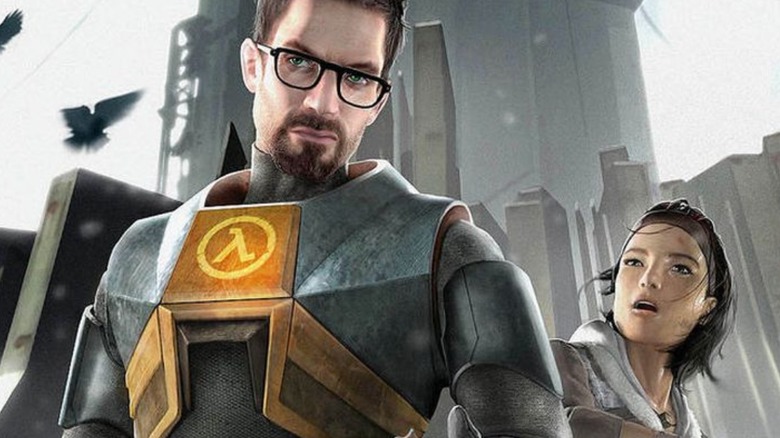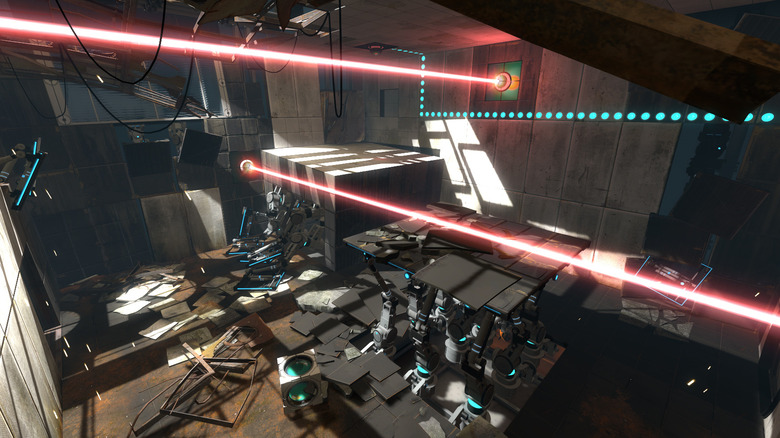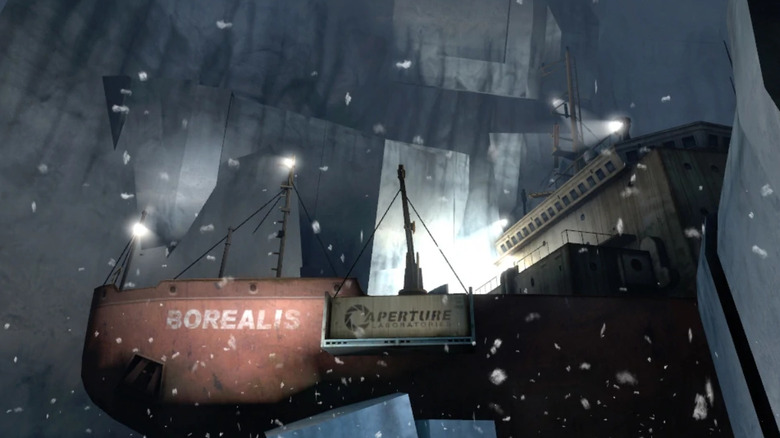The Game You Never Realized Is In The Half-Life Universe
Smashing into the gaming scene of 1998 with over 50 Game of the Year awards, "Half-Life" kicked off series as well-known for its critical acclaim as its long list of canceled titles. The last mainline release ended on a devastating cliffhanger that the developers ultimately never delivered on, despite fervent pleas from the fans. In the intervening years, Valve seems to have been much more preoccupied with other projects and their innovation of the Steam platform than developing the final episode of their debut title. For the longest time, many thought that "Half-Life 2: Episode Two" — released in October of 2007 — would be the last they would ever hear of the intrepid Gordon Freeman.
A seldom-acknowledged fact is that "Portal," Valve's other massively popular yet ultimately discontinued title, made its debut on the very same day. Astute fans have since noticed that a release date isn't the only commonality the two games share.
That's right: the "Portal" and "Half-Life" series take place in the same universe. And yes, it goes beyond the infamous tongue-in-cheek Easter egg included in GLaDOS's parting song.
Black Mesa appears in Portal
The "Half-Life" references in "Portal" and "Portal 2" are fairly well-documented by the games' respective fandoms. The earliest you can find in the first game is a projector slide, apparently from an Aperture Science PowerPoint presentation on competing with Black Mesa— the main science company responsible for the events of "Half-Life." Then, of course, there is the song GLaDOS sings over the credits, in which she sarcastically suggests asking Black Mesa for help.
The mentions of what appears to be a passionate corporate rivalry — most unreciprocated by the opponent — continue on in "Portal 2." Introducing the character of Cave Johnson, former CEO of Aperture Science, the second game expands on the reasoning behind the animosity: as far as Johnson is concerned, Black Mesa's theft of his company's blueprints is the driving reason behind their bankruptcy. It's heavily implied that the numerous "second place" or "runner-up" trophies seen in their awards room came from losing the top spot to Black Mesa.
Aperture Science features in Half-Life
Still, many of these references could be dismissed as mere Easter eggs on the part of the developer, as they have very little significance to the plot of either series. What really cements the shared continuity of the two titles is something a little more substantial: the Borealis, a ship that serves as a key plot point in "Half-Life 2: Episode Two," appears to be affiliated with Aperture Science.
Though the in-game model uses the label Aperture "Laboratories" instead of "Science," the logo is unmistakable. As the Borealis seems to be setting up further plot developments for the never-released "Half-Life 2: Episode 3," it's certain that Aperture was meant to have some significance to the plot.
Whether this is the groundwork for future crossovers, no one can say. Valve, for their part, seems reluctant to tie their titles too closely together. A notable example: The original "Counter-Strike" was also considered to be set in the "Half-Life" universe on account of shared assets placing Black Mesa logos within the game. However, in "Counter-Strike: Global Offensive," the connection seems to have been retconned and replaced with more Easter-egg-esque callbacks instead.
A united Valve Cinematic Universe as theorized by some players is highly unlikely, to say the least. Then again, so was the idea of Valve ever picking the "Half-Life" series back up again, so who can say? Especially with the recent leaks on titles in development, it seems "Half-Life" fans have might have more to look forward to in the near future.



